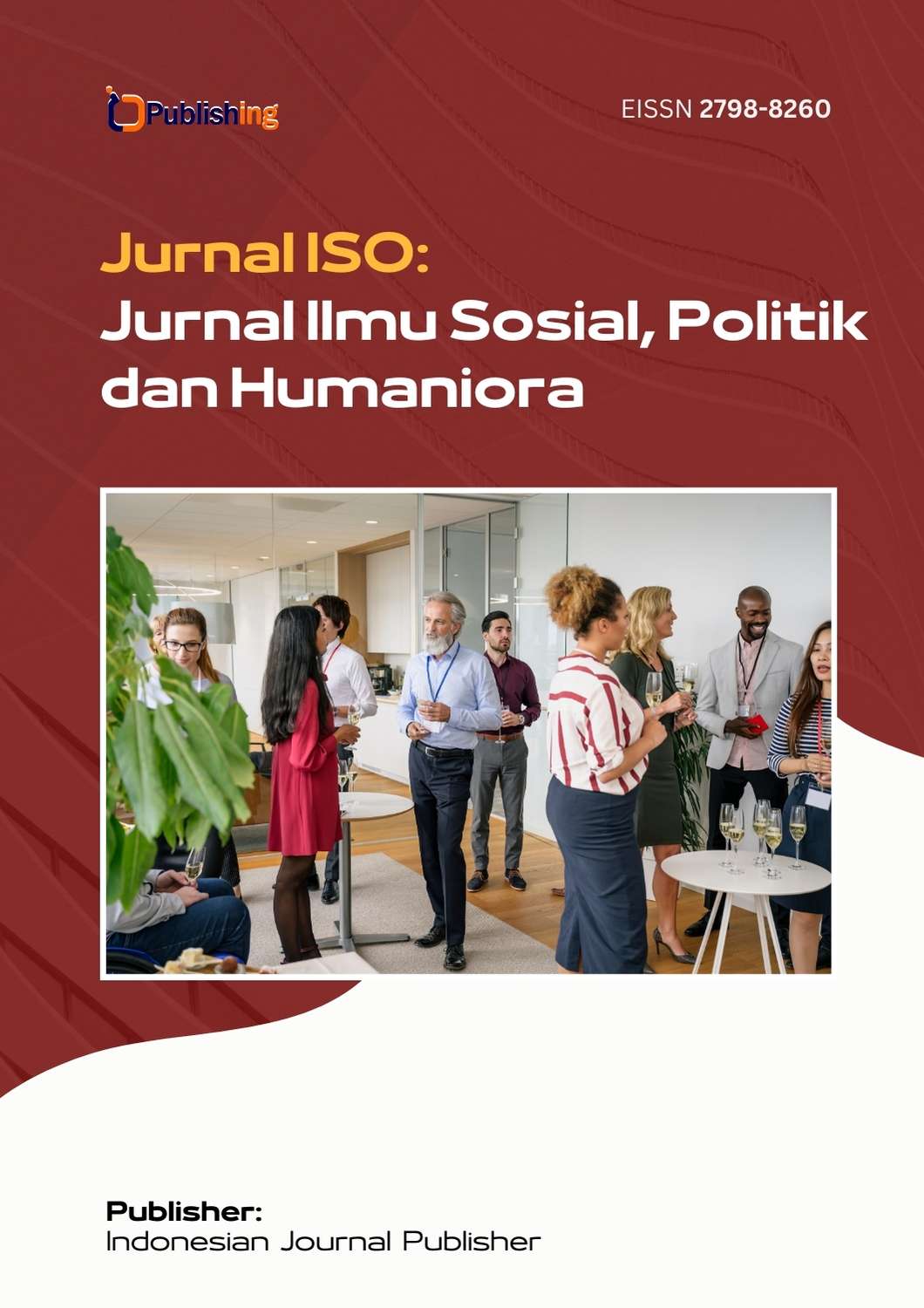Analisis Semiotika Toxic Masculinity Dalam Representasi Kenakalan Remaja di Mini Seri Adolescence (2025)
DOI:
https://doi.org/10.53697/iso.v5i1.2682Keywords:
Adolescence, Toxic Masculinity, Kenakalan Remaja, Kriminologi VisualAbstract
Kenakalan remaja merupakan bentuk perilaku menyimpang yang umum terjadi pada fase transisi menuju kedewasaan. Fenomena ini semakin kompleks di era digital, di mana remaja banyak terpapar berbagai narasi sosial melalui media massa dan media sosial. Salah satu narasi yang kerap muncul adalah mengenai konstruksi maskulinitas yang problematik, dikenal dengan istilah toxic masculinity. Pola ini menekankan dominasi, represi emosi, dan kecenderungan kekerasan sebagai indikator kejantanan, yang dapat berpengaruh pada perilaku menyimpang remaja laki-laki. Penelitian ini bertujuan untuk menganalisis bagaimana representasi toxic masculinity dikonstruksikan dalam mini seri Adolescence (2025), menggunakan pendekatan semiotika sebagai metode utama. Analisis dilakukan dengan menelaah tanda-tanda visual, simbolik, dan naratif yang muncul secara konsisten dalam serial, untuk memahami bagaimana makna toxic masculinity dikomunikasikan dan diinternalisasi oleh karakter utama yang merupakan remaja laki-laki. Hasil penelitian menunjukkan bahwa Adolescence merepresentasikan bentuk-bentuk toxic masculinity melalui berbagai simbol, seperti kekerasan fisik sebagai bentuk pembuktian diri, penghindaran ekspresi emosional, hingga pengaruh teman sebaya yang memperkuat nilai-nilai dominasi. Representasi tersebut memperlihatkan keterkaitan erat antara tekanan sosial, krisis identitas, dan kecenderungan remaja untuk menormalisasi perilaku menyimpang. Temuan ini menggarisbawahi pentingnya literasi media dan pendidikan gender sejak dini untuk mencegah internalisasi toxic masculinity yang dapat berdampak pada perilaku kriminal dan disfungsional
References
Arnett, J. J. (1999). Adolescent storm and stress, reconsidered. American Psychologist, 54(5), 317–326. https://doi.org/10.1037/0003-066X.54.5.317
Baele, S. J., Brace, L., & Coan, T. G. (2021). From Incel to Terrorist: Mapping the Online Evolution of Incel Ideology. Terrorism and Political Violence, 33(8), 1611–1635. https://doi.org/10.1080/09546553.2020.1789906
Baele, S. J., Brace, L., & Coan, T. G. (2021). From “incel” to “saint”: Analyzing the violent worldview behind the 2018 Toronto attack. Terrorism and Political Violence, 33(6), 1263–1281. https://doi.org/10.1080/09546553.2019.1638256
Bronfenbrenner, U. (1979). The ecology of human development: Experiments by nature and design. Harvard University Press.
Chandler, D. (2017). Semiotics: The basics (3rd ed.). Routledge. https://doi.org/10.4324/9781315666982
Connell, R. W. (2005). Masculinities (2nd ed.). University of California Press.
Connell, R. W., & Messerschmidt, J. W. (2005). Hegemonic masculinity: Rethinking the concept. Gender & Society, 19(6), 829–859. https://doi.org/10.1177/0891243205278639
Danesi, M. (2016). The semiotics of emoji: The rise of visual language in the age of the internet. Bloomsbury Academic.
Gill, R. (2003). Power and the production of subjects: A genealogy of the new man and the new lad. In B. Benwell (Ed.), Masculinity and men’s lifestyle magazines (pp. 34–56). Blackwell.
Ging, D. (2019). Alphas, betas, and incels: Theorizing the masculinities of the manosphere. Men and Masculinities, 22(4), 638–657. https://doi.org/10.1177/1097184X17706401
Hoffman, B., Ware, J., & Shapiro, E. (2020). Assessing the threat of incel violence. Studies in Conflict & Terrorism, 43(7), 565–587. https://doi.org/10.1080/1057610X.2020.1751459
Jane Bailey, & Valerie Steeves. (2015). eGirls, eCitizens: Putting technology, theory and policy into dialogue with girls’ and young women’s voices. University of Ottawa Press.
Kimmel, M. S. (2008). Guyland: The perilous world where boys become men. Harper.
Kimmel, M. (2013). Angry White Men: American masculinity at the end of an era. Nation Books.
Körner, T. (2018). Radicalized masculinity: The discourse of incels and MRAs online. In Kimmel, M. S., & Sabo, D. (Eds.), The Oxford Handbook of Masculinity (pp. 660–675). Oxford University Press.
Kress, G., & van Leeuwen, T. (2006). Reading images: The grammar of visual design (2nd ed.). Routledge.
Kupers, T. A. (2005). Toxic masculinity as a barrier to mental health treatment in prison. Journal of Clinical Psychology, 61(6), 713–724. https://doi.org/10.1002/jclp.20105
Mahalik, J. R., Burns, S. M., & Syzdek, M. (2003). Masculinity and perceived normative health behaviors as predictors of men's health behaviors. Social Science & Medicine, 64(11), 2201–2209. https://doi.org/10.1016/j.socscimed.2007.02.035
Massanari, A. L. (2017). #Gamergate and The Fappening: How Reddit’s algorithm, governance, and culture support toxic technocultures. New Media & Society, 19(3), 329–346. https://doi.org/10.1177/1461444815608807
McRobbie, A. (2009). The aftermath of feminism: Gender, culture and social change. SAGE.
Pascoe, C. J. (2007). Dude, you're a fag: Masculinity and sexuality in high school. University of California Press.
Phelan, J. C. (2001). What is stigma and why does it matter? Journal of Sociology & Social Welfare, 28(1), 118–126.
Pollack, W. S. (1998). Real boys: Rescuing our sons from the myths of boyhood. Henry Holt and Company.
Saldaña, J. (2016). The coding manual for qualitative researchers (3rd ed.). SAGE Publications.
Schrock, D., & Schwalbe, M. (2009). Men, masculinity, and manhood acts. Annual Review of Sociology, 35, 277–295. https://doi.org/10.1146/annurev-soc-070308-115933
Downloads
Published
How to Cite
Issue
Section
License
Copyright (c) 2025 Gladyssia Kinssy

This work is licensed under a Creative Commons Attribution 4.0 International License.













